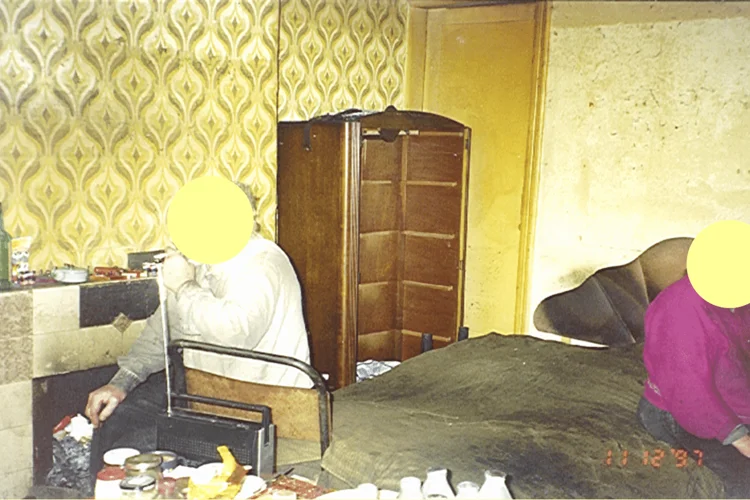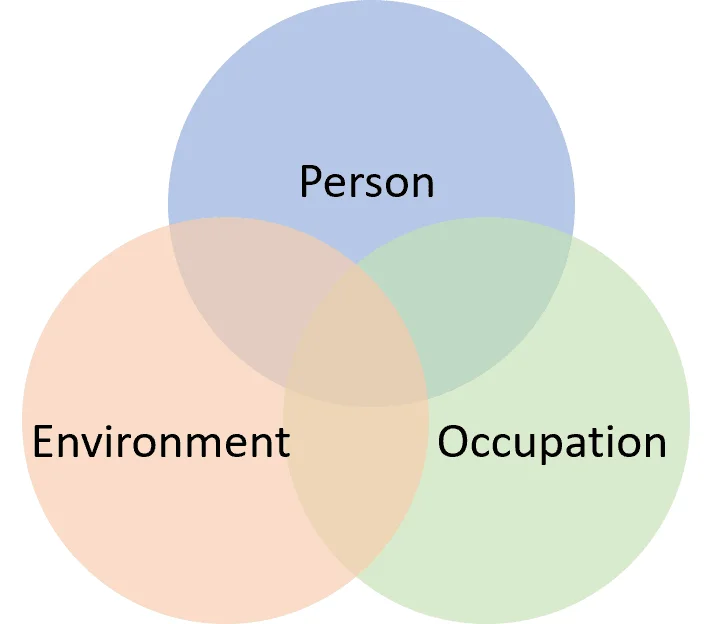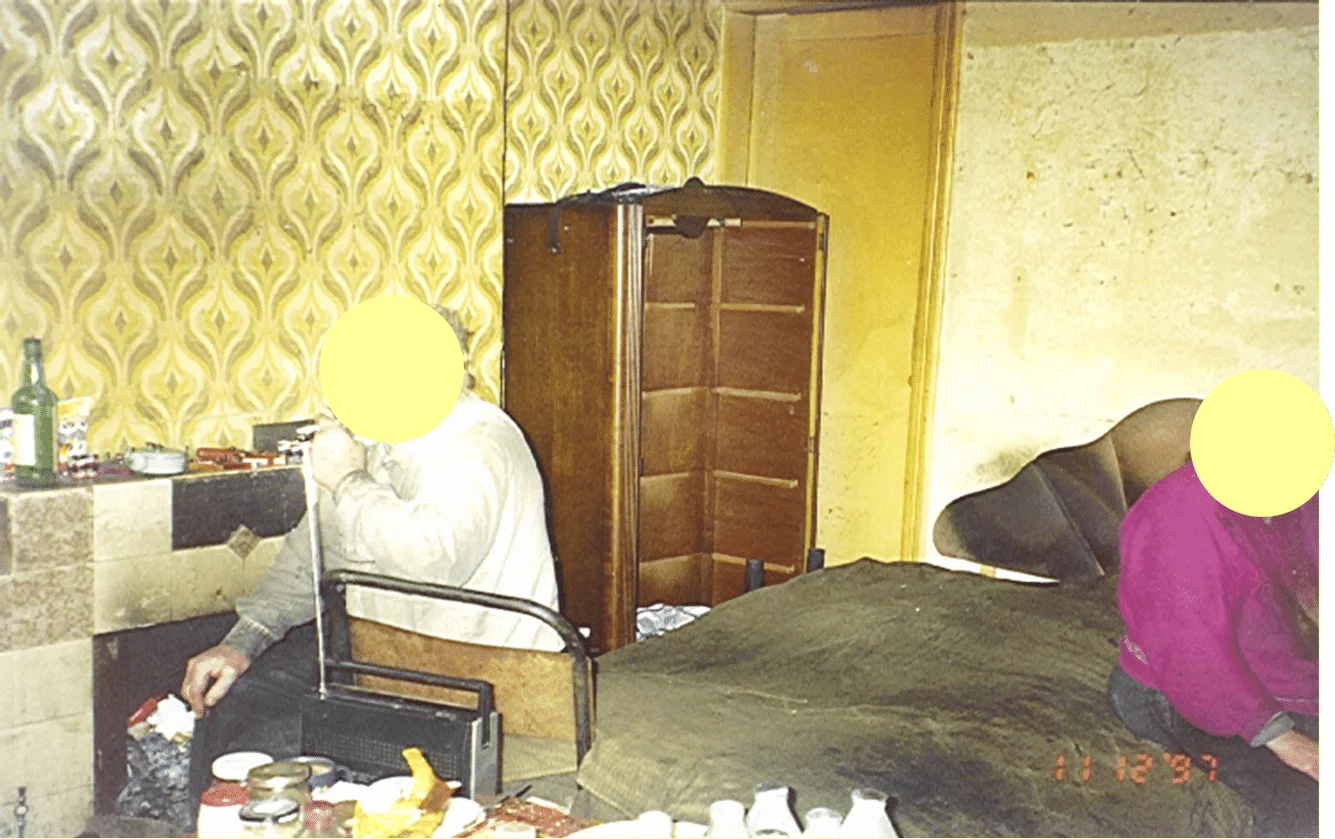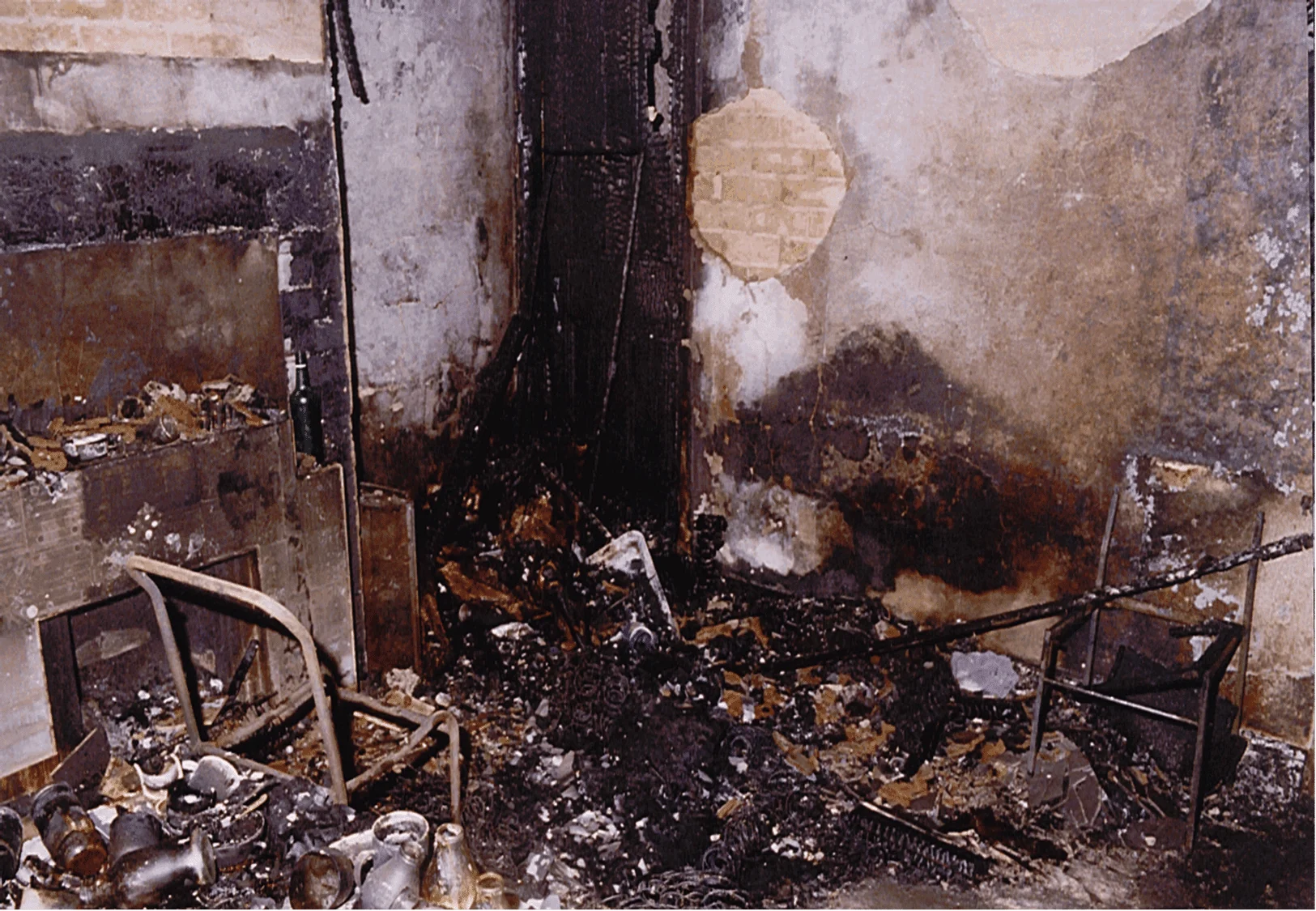PEO Model
When assessing risk, NFRS uses the Person-Environment-Occupation (PEO) model. PEO is a way of looking at all the information gathered about the person, environment, and occupation.
In this instance, the term “occupation” is used to describe the important and meaningful activities that we engage in – this could include washing and dressing, cooking, childcare, exercise, or work.
We then consider how the different areas intersect to understand the quality of the individual’s occupational performance, which may impact on their risk of fire.
Real-life scenario
Before going through the different elements of the PEO Model, please look at this photo of a high-risk situation that NFRS has previously visited. Think about the information you can gather about the person, the environment, and the occupations of the residents.


Person
Elements that might be considered about the PERSON include
- Reduced mobility or being prone to falls can prevent safe evacuation in a fire
- Is the person easily distracted, or do they forget they are cooking?
- Does their mental health impact on awareness of safety or risk-taking?
- Sensory impairments, such as poor eyesight and hearing loss, can prevent people from hearing an alarm or seeing if they have dropped a cigarette
- Are they dextrous enough to turn off appliances after use?
- Engaging in hoarding behaviours, increasing the fire load in the property, or blocking exit routes?
Environment
Elements that might be considered about the ENVIRONMENT include
- Do they live alone – there is no one else to raise the alarm or help a vulnerable person escape in an emergency.
- Working smoke alarms not present
- People who have a single room existence
- Lacking support to pay bills or access benefits, causing them to stop heating their property
- Internal doors at the property are left open or missing
- Occupiers' lifestyle choices (more clutter = fire-loading and restricted escape routes)
- Is there a landline, mobile phone, or assistive technology so the person can summon help if needed?
- Is there evidence of previous fire – burn marks on clothing or soft furnishings?
Occupation
Elements that might be considered about the OCCUPATION include
- Cooking – has the individual left their cooking unattended, do they leave flammable materials near a source of ignition, do they use hot oil in a dangerous way
- Smoking – smoking in bed, smoking when under the influence of drugs or alcohol
- Alcohol – dependency or binge drinking can impact on risk assessment skills, reduce the ability to respond to a fire, cause drowsiness or forgetfulness when cooking
- Medication – do prescribed medications, over-the-counter drugs or illicit drugs cause drowsiness, increase falls risks, or affect decision-making?
Law, M., Cooper, B. A., Strong, S., Stewart, D., Rigby, P., & Letts, L. (1996). The person-environment-occupation model: A transactive approach to occupational performance. Canadian Journal of Occupational Therapy, 63, 9-23
NFRS noticed:
- Elderly occupiers living in a single room
- Unsafe smoking, including smoking in bed and not using ashtrays safely
- Regular alcohol use
- Fuel poverty – the couple have been using wood from the furniture to burn in the open fireplace (they have burnt a leg from the bed, so they are using a chair to prop up the mattress, also wardrobe shelves)
- Social isolation – no regular visitors or contact with services
- Exit (doorway) blocked by wardrobe
- Previous signs of fire - burn mark on headboard
- Cluttered environment


Findings listed below
Tragically, NFRS attended the property again when there had been a fatal fire. This photo was taken from the same perspective as the last picture you looked at, you can still see the metal frame of the chair that was under the bed.
- Plater removed from the wall by fire fighting jet
- Alcohol use
- Inappropriate use of smoking materials
- The fire started where the wardrobe stood
- Fuel poverty
- Charred springs from the mattress
- Chairs used to support the bed